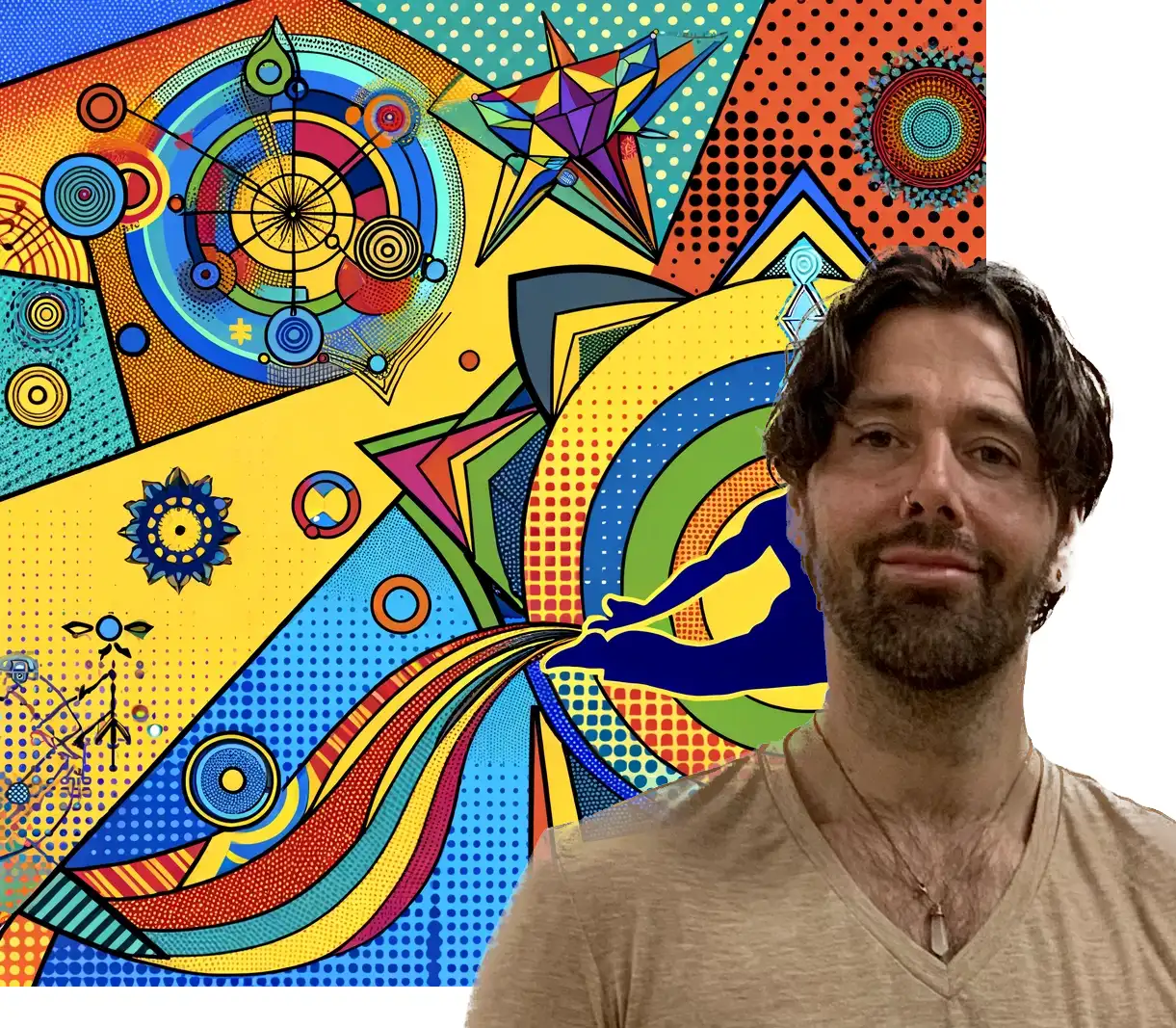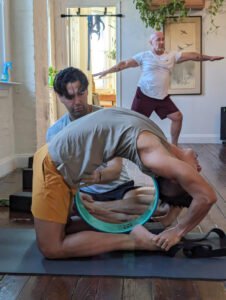Enhancing Ashtanga Yoga Through Systems Thinking
If Ashtanga Yoga’s end result is supposed to be qualities inside ourself such as: compassion, contentment, inclusivity, and peace, it becomes important to examine whether or not those are the results we are getting. This can be seen as transgressive or goal oriented, but in the pursuit of yoga, it’s a worthy aim.
When I was first trying out how to talk about this stuff, I sometimes really lacked the right words. I didn’t know how to talk about Ashtanga as a system– I just knew how to read the system. That’s what’s going on here. And I think that if we as teachers and practitioners can take a systems thinking approach to yoga, we might find ourselves able to enjoy the fruits of the practice for fully.
Systems thinking, by its nature, encourages a holistic, interconnected view of phenomena, focusing on relationships, patterns, and dynamics over time. Today, I’d like to see if I’ve improved in my ability to talk about this approach. Here’s how this perspective can improve decision-making in the context of Ashtanga Yoga:
Holistic Understanding
Interconnected Elements: Recognizing Ashtanga Yoga as a system of interconnected elements (postures, breathing, mental focus, etc.) allows practitioners to see how changes in one aspect can affect the whole. For instance, improving breath control can enhance the effectiveness of postures and mental clarity.
Physical and Mental Balance: Systems thinking emphasizes balance within a system. In Ashtanga Yoga, this approach can help maintain a healthy balance between physical exertion and mental well-being, ensuring that the practice supports overall health rather than just physical fitness.
Long-Term Perspective
Sustainable Practice: Systems thinking involves looking at long-term outcomes rather than just short-term gains. Applying this to Ashtanga Yoga encourages a sustainable approach to practice, focusing on gradual progress and injury prevention rather than immediate results.
Adaptation and Growth: By viewing Ashtanga Yoga as a dynamic system, practitioners can be more adaptable, modifying their practice as they grow older or as their circumstances change, thereby maintaining its relevance and benefits over a lifetime.
Feedback Loops
Self-Regulation: Systems thinking highlights the importance of feedback loops. In the context of Ashtanga Yoga, this means paying attention to the body’s and mind’s responses to the practice and adjusting accordingly. For example, if a practitioner experiences discomfort or stress, they might modify their practice to restore balance.
Continuous Improvement: Regular practice and attentive observation create feedback that informs ongoing adjustments, leading to continuous improvement in both the practice and the practitioner’s well-being.
Informed Decision-Making
Prioritizing Practices: Understanding Ashtanga Yoga as a system helps in prioritizing certain aspects of the practice based on personal goals and needs. For instance, someone might focus more on the meditative and breathing aspects to manage stress.
Lifestyle Integration: Viewing the practice as part of a larger system of one’s lifestyle encourages integrating principles of yoga beyond the mat, like mindfulness and discipline, into daily life.
In essence, viewing Ashtanga Yoga as a system and applying systems thinking provides a comprehensive framework for understanding and engaging with the practice. It encourages considering all aspects of the practice and their interrelations, leading to more balanced, informed, and sustainable choices. This holistic approach not only enhances the physical and mental benefits of Ashtanga Yoga but also promotes a deeper understanding of oneself and one’s interaction with the world.
Back to the Shala
Viewing Ashtanga Yoga as a system and applying systems thinking can significantly enhance our approach to the practice, leading to more informed and effective choices.
In the early 2020s, I had an apprentice named Victoria Wolfgang. She’s wonderful, but she arrived right as I was working on creating the language to help present ashtanga yoga in a manner that felt authentic to the rich history and culture of this practice as well as authentic to me– to the systems I saw and the ethics baked right in. She saw me really fail to use my words– over and over again. But bless her, Victoria also saw me try to use them better.
I think things like personal agency and autonomy are often being limited by action if not word in many Ashtanga Yoga shalas. I base that off of feedback I hear from practitioners that visit, folks who end up on our doorstep, etc. Teachers might tell students to memorize their sequence, sure. Encouraging agency is more than telling someone to memorize the sequence– it requires looking at our speech, beliefs and presentation. What meta messages are being sent? I’ve seen authoritarianism and group-think arise in spaces, often the end result being spaces that present an exclusivity.
It feels great to have the language now, and to get to rewrite some of that history, ya know? Victoria was in today and inspired me to share this, as she heard me sharing something similar in real life to someone else (hopefully better than I did it for her).
If you’re having trouble finding the right balance in your practice, don’t hesitate to reach out. I’ve helped a lot of people learn to read their system.









This is great!
This article on enhancing Ashtanga Yoga through systems thinking is an enlightening read. It explores how viewing Ashtanga as a holistic system with interconnected elements—like postures, breath, and mental focus—can lead to a more sustainable and balanced practice. By emphasizing long-term outcomes, adaptability, and feedback loops, the article highlights how practitioners can achieve continuous improvement and integrate yoga principles into their daily lives. This thoughtful approach makes the practice more comprehensive and transformative.